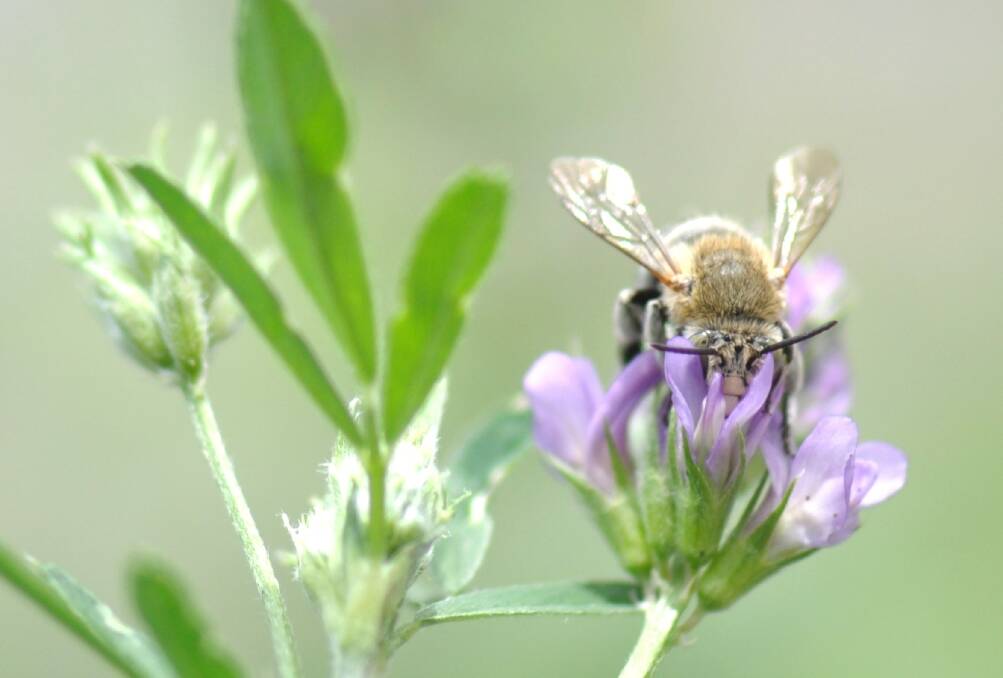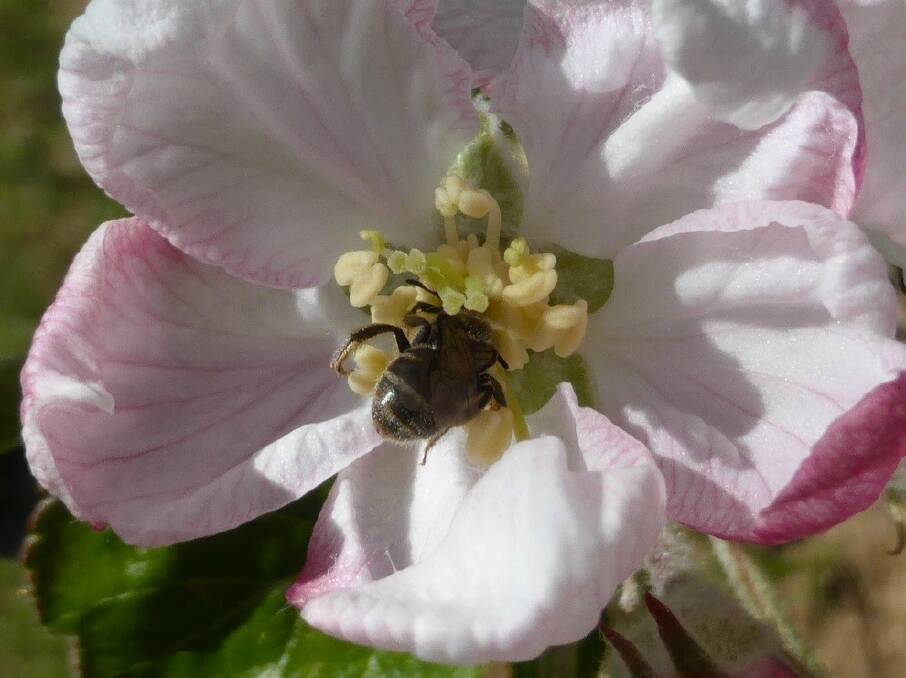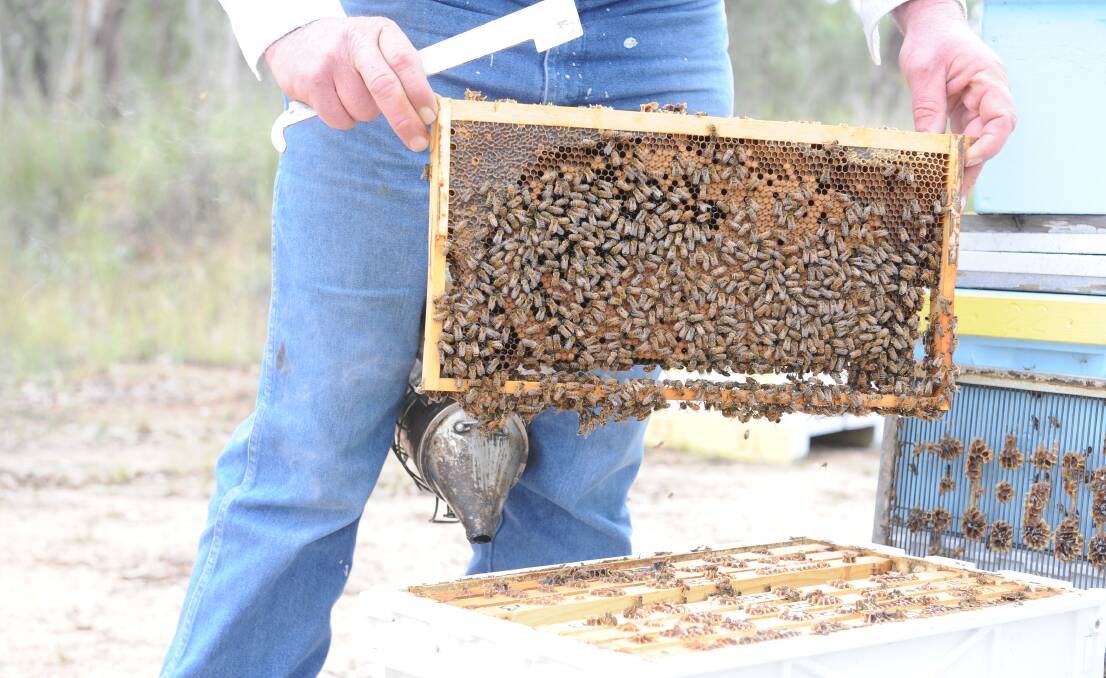
A BIG threat to the profitability of pollination dependent crops is heading Down Under, but a there’s a potential fix on hand which could deliver wins all round for farmers, the environment and the community.
Feral European honey bees donate no paltry amount of pollination to Australian growers, and all at no cost. Now, Varroa mite, a deadly international invader threatens to derail the free service.
But researchers at the University of Adelaide are working on a plan that would simultaneously bolster the free bee service, boost numbers of home-grown bee species to replace the expected drop in feral honey bees and create an incentive to revegetate the landscape with blooming native plants.
Varroa only hits honey bees while natives, of which there are more than 1,500 species, can be better pollinators and thrive in habitat that provides a bunch of benefits to landholders.
Varroa is likely to cause a population decline that could leave industries short of pollinators and reduce productivity and profitability
- Prof. Andrew Lowe
Fruiting trees like cherries, apples and pears as well as crops such as lucerne and canola current rely on honey bees to pollinate an estimated 50 per cent to 70pc of Australian crops.
The rest is done by hived bees, native bee species and insects including butterflies, beetles, flies, moths, and ants. That is, if they can get a seat at the table.
Like all pollinators, honey bees feed on pollen, but they are aggressive and often out-compete other insects for food. Their hives even steal habitat from birds and small mammals.
The pin head-sized Varroa mite has breached borders across the globe, decimating honey populations as it feeds on the blood of feral and hived honey bees and their larvae, transmitting deadly diseases.
It originated in north Asia in the 1950s and spread to Europe, Africa, Asia, the U.S and Papua New Guinea. And now, experts agree, it is inevitably headed our way.

When New Zealand suffered its invasion in 2008 the feral honey bee population fell 90pc. According to CSIRO researchers, when Varroa mite hit the U.S in the late 1980s, hived honey bee populations declined 30pc and growers demand for pollination overran supply, triggering a four-fold price rise.
But much can be done to prepare for the incursion, according to researchers at University of Adelaide.
Bee expert Dr Katja Hogendoorn, from the University’s School of Agriculture, is studying pollinators of lucerne, canola, apple and pear crops.
She said cropping monocultures and habitat reduction have pressured bees across the globe.
To flourish, bees need a varied diet and diverse plants for good nutrition, which is lacking in crop-dominated landscapes that flower once a year.
“Different types of pollen have different proteins in them, and crops only flower briefly throughout while bees are present throughout the year,” Dr Hogendoorn said.
Her project partner, Professor Andrew Lowe from University of Adelaide Environment Institute said “the decline of honey bees doesn’t need to be all bad”.
Native revegetation could help maintain bee populations for horticulture and cropping industries, he said.
“Given a large proportion of pollination is provided by honey bees, Varroa is likely to cause a population decline that could leave industries short of pollinators and reduce productivity and profitability.
“We want to understand what flowers they native bees visit and when. We want a population of pollinators that’s ready and available to transfer onto a crop when it flowers.”
Prof. Lowe said productive cropping areas need to provide food for bees before crops flower, so they are primed and ready to go in the limited flowering window.
“The best habitat will flower earlier than crops, but doesn’t overlap, and then maintains other plants that flower through winter. That would mean better yields and pollination security for the future when Varroa hits.”
Research to boost honey bees has begun in Europe, but uniquely, Australia has the opportunity to boost native pollinator and plant populations.

Revegetation does not only benefit bees, Prof. Lowe said.
“That kind of planting can help biodiversity conservation, carbon sequestration, soil integrity and more broadly, ecosystem services.”
Dr Hogendoorn’s said native species are “often more effective pollinators partly because they carry pollen on their body dry, while honey bees carry it wet and in a clump”.
“Pollination is an accident. Bees are out to gather for food for their offspring and it falls off them on other flowers when they’re collecting,” she said.
“Native bees are better pollinators, but they are there in lower numbers.”
In one important feed crop, lucerne, Dr Hogendoorn’s research showed that, per unit of time, a native Nomia bee species pollinated 33 times more lucerne flowers than a honey bee.
“This native bee species pollinated 33 more flowers than a honey beeper minute. Honey bees have a problem with lucerne,” she said.
“When a honey bee visits lucerne lands on the lip and trips the flower the column of stamens whacks it on the head. Honey bees quickly learn to avoid getting hit by coming in on the side of the flower, but then the flower doesn’t get pollinated.
“Native bees are smaller, so when they come into the landing area they trip the flower and get the pollen but they don’t get hit on the head.
That’s why native bees can be so much more efficient and why you need a lot of honey bee hives for lucerne pollination.”
The project is working on establishing several demonstration sites for native revegetation and a set of guidelines for plantings.
“We hope to create an online planning tool, which can take an aerial view of a farm and define different land uses to design plantings around crops,” Prof Lowe said.

This project is supported by the Commonwealth’s Rural R&D for Profit program with $9 million in funding - $4.5M of which is allocated to activities in South Australia. Apple and Pear Growers Association of South Australia and Lucerne Australia are industry partners.


